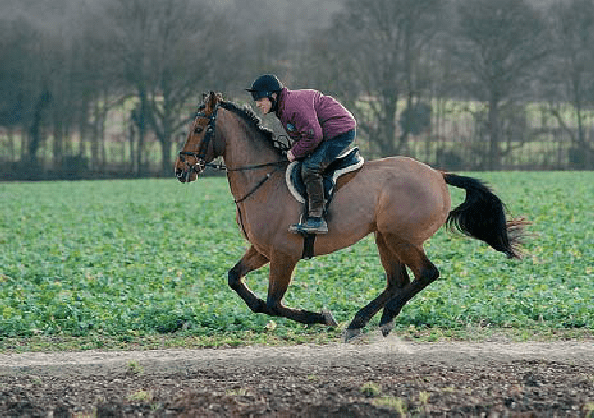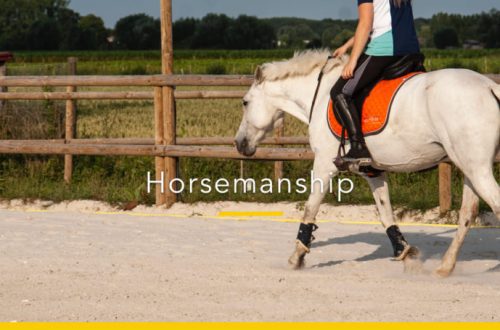
How to enjoy speed
How to enjoy speed
With each training session, your riding skills are getting better. Finally, it’s time to move on to cantering in the fields or cross-country skiing.
But how do you learn to control a horse at high speed and still enjoy the fast ride?
Mark Smith is a famous English coach. He has been working with horses all his life. He was a jockey, performed at international and national show jumping tournaments. Now specializes in “high speeds”.
“Be sure to include fast riding in your training – it has a beneficial effect on the physical condition of both the horse and the rider. And a great shape is a guarantee of excellent body control, which is especially valuable when passing cross-country.”
Step by step
Mark Smith’s method is based on his many years of experience as a jockey. Together with his students, he watches the ride of great masters such as Frankie Dettori. “Frankie has fantastic riding technique,” Mark explains. “He constantly watches videos of his performances and trains on a mechanical horse.”
“By changing the position of the body, Frankie affects the speed of the horse,” the trainer continues. – At the start, he rises in the saddle, and the animal stands calmly. If Frankie wants the horse to go faster, he leans forward a little, and then, at the end of the race, he leans back a little and softens the reins a little so that he stops.
If you can’t keep your horse under control by galloping in the arena, you’re not mature enough for open field crosses. Work with a good trainer who will first teach you how to calm an overly energetic cantering horse. The slow gallop is a real art. And because horses, like people, are slaves to their habits, regular exercise can work wonders.
Finally, it happened. You went for a walk. First trot, because you can not immediately start with a rapid movement. Then slowly move to a gallop. To prevent the animal from rushing, do not fight with it, but use half halts. To do this, take the rein a little on yourself and immediately relax your hand – and so on until the horse understands that he must obey you. Remember: when a horse pulls a man, the man is to blame.
Follow the landing
During training, Mark Smith advises doing all exercises with short stirrups to strengthen the calf muscles. This can also be done during a walk – while you need to go at a light trot and every now and then, as if transferring body weight to your heels.
“Pull your heel down. If the knee goes forward, the leg moves back and the landing becomes less deep and firm. Meanwhile, the horse must be handled calmly and almost imperceptibly, the animal should not feel that the person is not holding well in the saddle, Smith adds. “The less pressure on the horse’s mouth, the better. And don’t forget the half halts.”
Horseman without hands
During lessons with beginner riders, Mark takes horses on the lunge so that his students learn to control the speed of movement without a rein, using only their own body weight. Let’s say that to lift a horse into a trot, you only need to swing your lower back forward. And you can reduce the speed of movement by slightly deviating back in the saddle. Squeeze your knees and the horse will stop.
“Lunge more often for no reason,” advises Mark. – If you start to lose balance, hold on to the “safety” strap. And one more thing: in order to make sure that the horse obeys your commands, and not the trainer, put a couple of landmarks in the arena, for example, show jumping obstacles, and try to change gaits while passing them.
Seats for passengers
The coach is sure that when riding at a gallop, riders often make a lot of unnecessary movements. For example, pulling on the reins in an attempt to slow down in front of an obstacle on a cross country. “Learn to be passengers,” Mark says. “Passengers with a speedometer in their heads. It is not so difficult”.
First, find out how fast you should be driving. A simple example. In English triathlon at the initial level, the cross-country speed must be 450 meters per minute. Work on it. Measure the distance of 450 meters, put limit signs at the start and finish. Now it’s time to find yourself an assistant who will watch you with a stopwatch in his hands.
“Look at the first photo (on the left). A person starts here for the first time, he runs the distance too slowly and is five seconds late, – Smith comments on our illustrations. “In the second photo (on the right), the rider leans slightly, the horse picks up speed, and they easily fit in time.”


When you learn how to fit in a minute, move on to training in the arena. Calculate how many laps you need to complete to cover 450 meters and then measure your time to complete that distance.
The next step is to put a pole on the ground and make a small obstacle out of it. You will be surprised, but most likely, it will be overcome in a good rhythm and at the right speed. Happened? Now you know what it is – the pleasure of speed.
The material is published with the permission of the copyright holder – the magazine “MyHorse” (“My horse”).
- nhl-super.ru 5 September 2017 of
I love to ride horses





